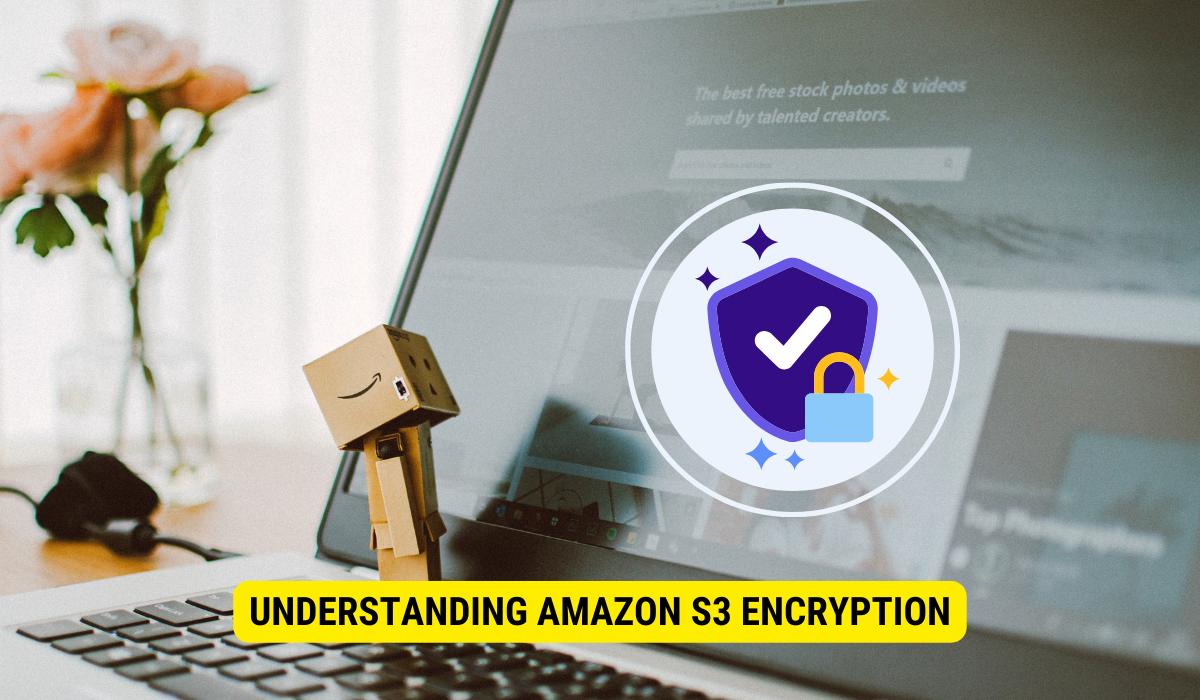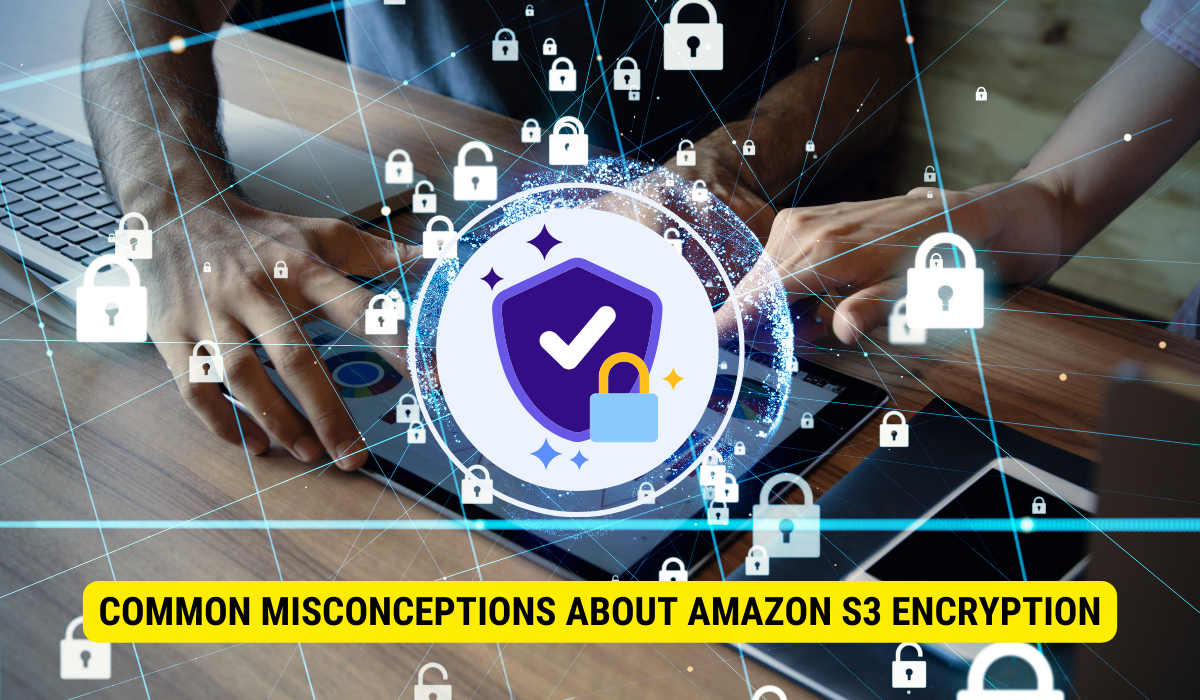Yes, Amazon S3 (Simple Storage Service) provides robust encryption options to protect data both at rest and in transit. It offers server-side encryption (SSE) with various encryption types, including SSE-S3, SSE-KMS, and SSE-C. Additionally, data transferred between your devices and Amazon S3 is encrypted using SSL/TLS protocols to ensure data confidentiality and integrity during transit. While Amazon S3 encryption is highly recommended for enhanced data security, it is not mandatory but provides significant protection for your stored data
Amazon S3 (Simple Storage Service) is a extremely popular cloud storage solution known for its scalability, durability, and cost-effectiveness. When it comes to data security, one common question that arises is whether Amazon S3 always encrypts data. I will explore the different features of Amazon S3 encryption to comprehensively understand how data is protected in this cloud storage service.
Understanding Amazon S3 Encryption
Encryption is vital to data security, and Amazon S3 offers multiple encryption options to safeguard your data. Encryption includes converting your information into an unreadable format using encryption algorithms, ensuring that only authorized parties can access and interpret the information. Let’s delve into the basics of Amazon S3 encryption.
When it comes to securing your data in Amazon S3, you have two primary methods of encryption to choose from:
The Basics of Amazon S3 Encryption
Amazon S3 supports two primary methods of encryption:
- Server-Side Encryption (SSE): In this method, Amazon S3 encrypts and decrypts your data transparently without you explicitly managing or providing encryption keys. SSE uses different encryption types based on customer preferences.
- Client-Side Encryption: With client-side encryption, you encrypt the data on your side before uploading it to Amazon S3. You have full control over the encryption process, including managing the encryption keys.
Let’s take a closer look at each of these encryption methods:
Server-Side Encryption (SSE)
Server-side encryption (SSE) is a convenient option provided by Amazon S3, where the encryption and decryption of your data are handled automatically. With SSE, you don’t have to worry about explicitly managing or providing encryption keys. Amazon S3 handles all the encryption processes behind the scenes, ensuring your data remains secure.
There are different types of server-side encryption offered by Amazon S3:
- Amazon S3 Managed Keys (SSE-S3): In SSE-S3, Amazon S3 automatically handles the encryption and decryption, allowing you to focus on your data without worrying about key management. Amazon S3 manages the keys behind the scenes, ensuring the security of your data at rest.
- AWS Key Management Service (SSE-KMS): SSE-KMS provides an additional layer of security, giving you more control over your encryption keys. With SSE-KMS, you can manage, rotate, and audit the keys using AWS Key Management Service (KMS). This lets you have granular control over your data encryption and key management processes.
- Customer-Provided Keys (SSE-C): You have complete control over the encryption and keys in SSE-C. Amazon S3 uses the keys you provide to encrypt and decrypt the data. This option suits customers who want to manage their encryption keys and have full control over the encryption process.
Client-Side Encryption
Client-side encryption is another method offered by Amazon S3, where you encrypt the data on your side before uploading it to Amazon S3. With client-side encryption, you have full control over the encryption process, including managing the encryption keys. This method lets you encrypt your data using your preferred encryption algorithm and ensures that only authorized parties can access and interpret the information.
It’s important to note that data transferred between you and Amazon S3 can be encrypted using SSL/TLS protocols, ensuring data integrity and confidentiality during transit. This additional layer of encryption ensures that your data remains secure even during the transfer process.
The Process of Amazon S3 Encryption
To understand how Amazon S3 handles data encryption, let’s explore the process it follows at rest and in transit.
How Amazon S3 Handles Data at Rest
When you upload data to Amazon S3, the service automatically encrypts it according to your chosen encryption settings. If you opt for Server-Side Encryption, Amazon S3 handles the encryption process using the specified method (SSE-S3, SSE-KMS, or SSE-C), encrypting and storing your data in an encrypted format on disk. Each object you upload has its unique encryption key.
For client-side encryption, you encrypt the data using encryption software or libraries before uploading it to Amazon S3. Once uploaded, the encrypted data is stored as an object in an S3 bucket. Amazon S3 cannot access the encryption keys used for client-side encryption.
How Amazon S3 Handles Data in Transit
Amazon S3 protects your data using SSL/TLS (Secure Sockets Layer/Transport Layer Security) protocols in transit. These cryptographic protocols establish an encrypted communication channel between your device and Amazon S3, preventing unauthorized interception or data tampering during transmission.
The Role of Encryption Keys in Amazon S3
Encryption keys play a significant role in securing your data within Amazon S3. Look closer at managing encryption keys and key rotation in Amazon S3.
Managing Encryption Keys in Amazon S3
When using Server-Side Encryption, you can choose Amazon S3 Managed Keys (SSE-S3) or AWS Key Management Service (SSE-KMS) for key management. With SSE-S3, Amazon S3 automatically generates and manages unique keys for each object you upload. SSE-KMS allows you to manage encryption keys through AWS KMS, enabling centralized control and enhanced security options.
If you opt for Client-Side Encryption, you manage encryption keys. You can generate and store the keys locally or leverage a key management service offered by AWS, such as AWS KMS or AWS CloudHSM (Hardware Security Module).
Key Rotation and Amazon S3
Regular key rotation is a recommended security practice to mitigate risks associated with long-term key exposure. By rotating keys, you reduce the potential impact of compromised keys. Amazon S3 offers simple key rotation mechanisms for both SSE-S3 and SSE-KMS. You can rotate the keys manually or automate the process using AWS services and APIs.
Amazon S3 Encryption and Compliance
Ensuring data security and compliance is crucial for organizations across various industries. Explore how Amazon S3 encryption helps meet compliance requirements and address GDPR concerns.
Meeting Compliance Requirements with Amazon S3 Encryption
Amazon S3 encryption helps you meet various compliance requirements, including industry-specific regulations such as HIPAA (Health Insurance Portability and Accountability Act) and PCIDSS (Payment Card Industry Data Security Standard). Enabling encryption at rest and in transit provides additional protection to sensitive data.
Amazon S3 and GDPR Compliance
The General Data Protection Regulation introduced stringent data protection regulations for organizations handling personal data of European Union residents. Amazon S3 encryption can help you address GDPR compliance requirements, as it ensures personal data’s confidentiality, integrity, and availability. By implementing appropriate encryption measures, you can minimize the danger of data breaches and achieve compliance with GDPR.
Common Misconceptions about Amazon S3 Encryption
Despite its robust encryption capabilities, there are misconceptions surrounding Amazon S3 encryption. Let’s debunk some of these myths to ensure a clearer understanding of the security measures provided.
Debunking Myths about Amazon S3 Encryption
Myth 1: “Amazon S3 encryption is only necessary for highly sensitive data.” – It’s important to encrypt all sensitive data, regardless of its perceived sensitivity. Encryption helps protect data from unauthorized access, reducing the risk of data breaches and guaranteeing compliance.
Myth 2: “Amazon S3 encryption is too complicated and time-consuming.” – While encryption may seem complex, Amazon S3 offers user-friendly encryption options, including managed encryption keys and automated key rotation. Integrating encryption into your data storage workflows can be seamless and efficient.
Understanding the Limitations of Amazon S3 Encryption
While Amazon S3 provides robust encryption solutions, it’s essential to understand its limitations:
- Encryption does not protect against vulnerabilities in system configurations or malware attacks. Extra security measures, such as access controls and regular security audits, are crucial to maintaining a comprehensive security posture.
- Encryption does not protect data while it is actively being accessed or processed. Once data is decrypted for use, it becomes vulnerable to potential threats. Implementing secure coding practices and access controls for data in use is essential.
Key Takeaways
- Amazon S3 provides robust encryption options, including server-side encryption (SSE) and client-side encryption.
- SSE offers three encryption types: SSE-S3, SSE-KMS, and SSE-C.
- Encryption keys play a crucial role in securing data in Amazon S3.
- Regular key rotation is recommended to mitigate security risks.
- Amazon S3 encryption helps meet compliance requirements, including GDPR.
- There are misconceptions surrounding Amazon S3 encryption, but with user-friendly options, it is not overly complicated.
- Encryption has limitations and should be complemented with additional security measures.
FAQs
Q: Is Amazon S3 encryption mandatory?
A: Amazon S3 does not enforce mandatory encryption but provides robust encryption capabilities to safeguard your data. Implementing encryption is highly recommended to enhance data security.
Q: Can I choose which encryption method to use in Amazon S3?
A: Amazon S3 allows you to choose from different encryption options, including server-side encryption (SSE) types and client-side encryption. Select the encryption method that aligns with your security requirements and key management preferences.
Q: Does Amazon S3 encrypt data during transit?
A: Amazon S3 can encrypt data during transit using SSL/TLS protocols, ensuring the confidentiality and integrity of your data while it is being transferred between your devices and Amazon S3.
Q: Can Amazon S3 help me meet compliance requirements?
A: Absolutely. Amazon S3 encryption features aid in meeting compliance requirements, including industry-specific regulations such as HIPAA and PCI DSS. By implementing encryption measures, you add an extra layer of protection to sensitive data.
Q: Are there any limitations to Amazon S3 encryption?
A: While Amazon S3 encryption provides robust security, it is essential to complement it with other security measures. Encryption does not protect against system vulnerabilities, malware attacks, or data in active use. Employing additional security controls is crucial to maintain a comprehensive security posture.
Conclusion
In conclusion, Amazon S3 offers extensive encryption capabilities to protect your data at rest and in transit. By leveraging server-side encryption and client-side encryption options, managing encryption keys effectively, and adhering to compliance standards, you can ensure the security and integrity of your data stored in Amazon S3.
